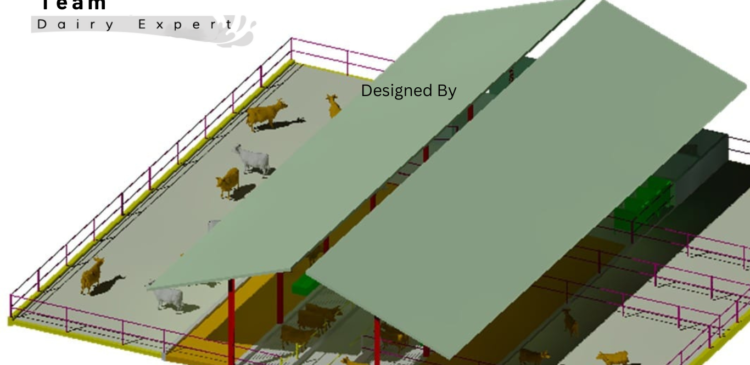Revolutionizing Dairy Farming in India: 10 Essential Tips for Compost Bedded Pack Barn Success

The growing interest in compost bedded pack barns is making waves in the Indian dairy farming landscape, promising enhanced cow comfort and positive environmental impacts. When managed effectively, these barns offer an excellent solution for dairy cattle housing, tailored to the unique conditions of India. However, mismanagement can lead to significant issues, affecting somatic cell count, clinical mastitis, and foot health.
1. Customized Spacing for Indian Cows
Every region in India adopting compost bedded pack barns may believe it can implement unique strategies. While local conditions may influence management, the fundamental principles of compost barn management remain constant. Adequate space per cow is critical, with a recommended minimum of 125 square feet per cow, ideal for Indian dairy breeds.
2. Strategic Barn Orientation in the Indian Context
An east-west orientation is paramount for compost bedded pack barns in India, maximizing natural light patterns and minimizing heat-stress conditions, which are common in the Indian climate. Properly positioned fans aid in cooling cows and maintaining dry bedding material, contributing to overall cow well-being.
3. Cooling and Ventilation for Indian Conditions
The importance of an open ridge vent for natural ventilation cannot be overstated, especially in the Indian climate. Proper fan selection and spacing, along with sidewall construction considerations, ensure efficient cooling and ventilation, preventing issues such as bunching behavior during heat stress.
4. Thoughtful Bunk Space Suited for Indian Dairy Farming
Overlooking feed and water space during barn construction can lead to challenges in the Indian context. Providing sufficient feed bunk space (24–30 inches per cow), water access, and multiple entry access points contribute to efficient use of resting space, even for Indian dairy breeds.
5. Optimal Retaining Walls for Indian Conditions
Bedding retaining walls should balance manure storage needs with cow-level air flow, even in the Indian context. Current recommendations suggest a 2–2.5-foot retaining wall, enhancing cow comfort and pack moisture management in Indian dairy farms.
6. Rigorous Management Practices Tailored for India
Twice-daily stirring or tilling of the pack is crucial for oxygenating compost bacteria and removing fresh manure, especially in the Indian climate. Specialized roto-tillers, reaching at least 12–18″ deep, have shown the best results for Indian dairy farmers.
7. Strategic Bedding Storage Solutions for Indian Seasons
Given seasonal variations in bedding availability and pricing in India, having a dedicated storage location can prove highly beneficial for consistent barn operations.
8. Quality Bedding Material Choices for Indian Dairy Farms
Dry, fine wood shavings or sawdust are preferred for compost bedded pack barns in India. Avoid materials like cedar and ensure a moderate particle size to regulate microbial access, even in the Indian environment.
9. Adequate Bedding Depth Suited for Indian Conditions
Starting with 18″ of bedding material when establishing a new compost barn promotes optimal composting conditions, even in the Indian context. Cleaning packs annually in spring or fall is recommended for Indian dairy farmers.
10. Mastitis Prevention Strategies Tailored for Indian Dairy Farming
Compost bedded pack barns in India harbor high levels of surface bedding bacteria. Regular cleaning of teat ends during milking, E. coli and Klebsiella vaccines, and attention to mastitis prevention strategies are crucial, especially for Indian dairy breeds.
Embracing these considerations tailored for the Indian environment will help dairy farmers in India unlock the full potential of compost bedded pack barns, promoting both cow welfare and environmental sustainability.
For Designing Your Dairy Farm Schedule a Appointment with our Experts
